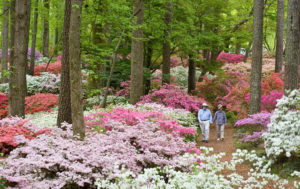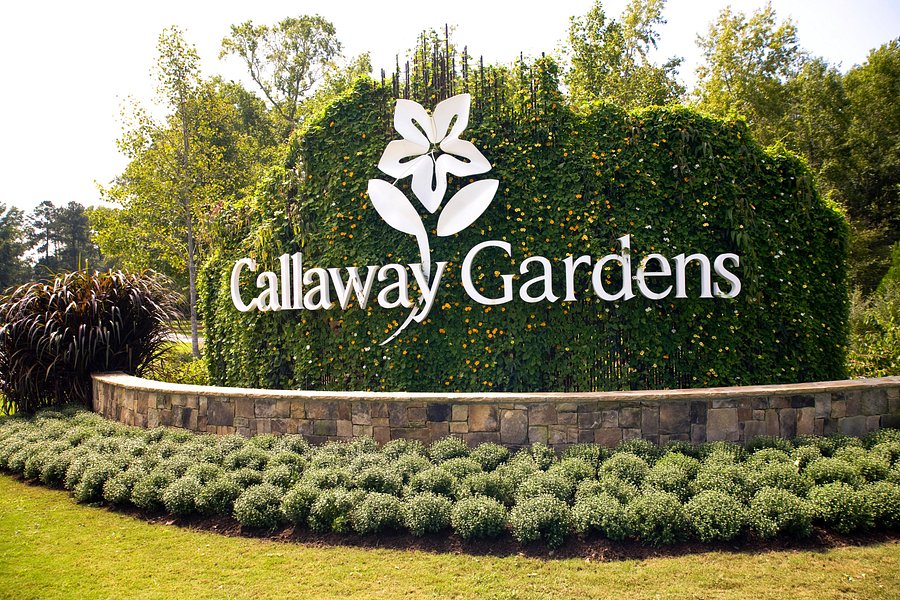By Mike May
While golf is the main attraction at the Callaway Resort & Gardens in western Georgia, this destination is just as appealing to outdoor enthusiasts — walkers, hikers, bicyclists, birdwatchers, and fishermen – who have been visiting this resort since it opened in 1952.
 When you step foot on either the Lake View, or the Mountain View golf courses at Callaway Resort & Gardens, a Georgia Golf Trail member, be prepared for an exciting and eye-opening adventure with ‘Mother Nature.’ In addition to pursing eagles, birdies, and pars, you must dwell on the flora and fauna that help shape and define the Callaway golf experience, which is truly impacted by the plant and animal life which thrives at the resort.
When you step foot on either the Lake View, or the Mountain View golf courses at Callaway Resort & Gardens, a Georgia Golf Trail member, be prepared for an exciting and eye-opening adventure with ‘Mother Nature.’ In addition to pursing eagles, birdies, and pars, you must dwell on the flora and fauna that help shape and define the Callaway golf experience, which is truly impacted by the plant and animal life which thrives at the resort.
While Callaway Resort & Gardens was built for visitors to get some R & R, there are ‘residents’ who don’t pay for their room or board, yet they are an integral part of the Callaway experience. Those ‘freeloaders’ include, white-tailed deer, turtles, Eastern tiger swallowtail butterflies, Eastern bluebirds, gray squirrels, red-tailed hawks, mallard ducks, Canadian geese, great blue herons, red foxes, grey foxes, wild turkeys, and the Georgia state bird, the brown thrasher. It’s worth noting that the bluebird nest boxes, which you will see on both golf courses, actually serve two purposes. They provide housing for the colorful cavity nester, plus they serve as 150-yard markers for golfers.
Callaway Resort & Gardens is also filled with a wide variety of flora as the property is overflowing with trees, plants, and flowers to see, smell, and admire. The rare plumleaf azalea serves as the resort’s floral emblem. 
Statuesque loblolly pines, climbing muscadine grapevine, southern magnolias, Yaupon holly, and longleaf pine also provide a distraction from golf. The climbing muscadine grapevine has purple thick-skinned, fall-ripening fruits, which are used in sauces, jellies, and preserves. Callaway’s southern magnolias were born from love. Decades ago, Callaway Resort founder Cason Callaway presented his wife, Virginia, with a gift of 5,000 southern magnolia seedlings, which were planted throughout the property. The Yaupon holly is a native evergreen which provides food and nesting sites for many songbirds. The long, “pompon” needles characterize the longleaf pine, which once dominated Pine Mountain Ridge.
In addition to the wide variety of plants, animals roam freely among the grounds. You will see red fox, gray fox, gray squirrels, Eastern fox squirrels, wild turkeys, and white-tailed deer, which is the largest mammal at Callaway Resort & Gardens. The deer are often spotted in the early morning and early evening hours, grazing along the edges of the fairways. The gray squirrels live acrobatic lives as they move and fly among the treetops. The ponds and lakes are filled with mallard ducks, Canadian geese, great blue heron, bufflehead ducks, and two types of turtles, plate-size yellow-bellied sliders and palm-size stinkpots. In addition many butterfly species reside in harmony at Callaway Gardens.
Biking, boating, bird-watching, fishing, hiking, swimming and tennis are alternate activities at the resort.
Ther are several accommodation options at Callaway Gardens, the spacious, first-class Lodge and Spa; the Mountain Creek Inn; the Mountain View Golf Cottages; the Southern Pine Cottages; and the Mountain Creek Villas & Vacation Homes.
When you are ready to view the magnolias, get a glimpse of the azaleas, see wild turkeys, and play two great golf courses, visit Callaway Resort & Gardens: http://www.callawaygardens.com/golf.










